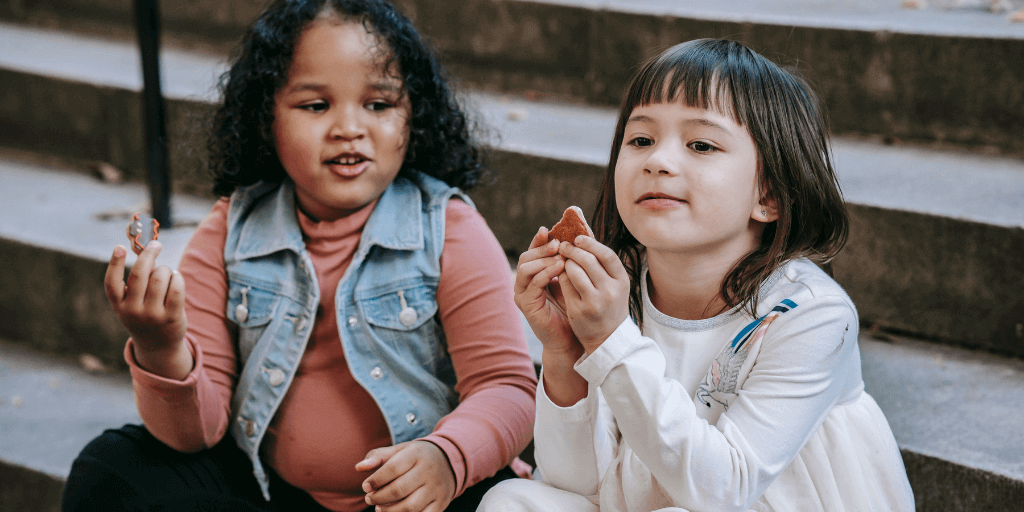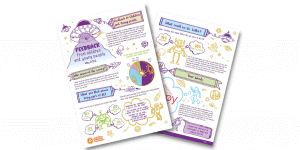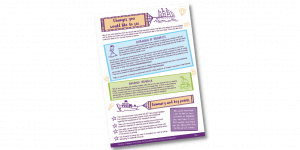
Participation Series: Making feedback meaningful
‘Making feedback meaningful’ blog article was written by Jess Carter, Lead – Knowledge Mobilisation, Education and Safeguarding Services at Australian Childhood Foundation as part of our Participation Series.
We know how important it is to uphold the rights of all children and young people to participate in decisions that affect them. As professionals working with children and young people, we are uniquely placed to elevate their voices and make decisions with rather than about them.
One of the ways we often go about doing this in organisations is by collecting feedback. The National Principles for Child Safe Organisations highlight the need to collect and integrate feedback from children and young people as well as their parents and carers. But in a world filled with opportunities for giving feedback, how do we make sure young people are not just heard but responded to and engaged with?
Collecting feedback carefully
Australian Childhood Foundation regularly collects feedback from a range of community and organisational stakeholders as part of its service delivery. One of these avenues is through an annual survey aimed at uncovering national insights from children, young people, their parents and carers into their experiences of the Foundation’s Therapeutic Services.
These insights in the document above were collected through SurveyMonkey and promoted in various service centres and through digital communications. Therapeutic specialists working with children, young people, parents and carers asked and collated the answers before entering them into SurveyMonkey on their behalf. We also continued to provide local, offline feedback mechanisms (such as comment boxes) for those who couldn’t participate online. It was important to design surveys that asked questions that were relevant across Australia and could be interpreted and analysed meaningfully.
Closing the feedback loop
Often, we imagine collecting feedback ends when we close the survey and write a report on the key insights for internal use. But this is just the start.
In an earlier blog in our Participation Series, we explored what it means for participation to be meaningful, and the need to strive for a balance between space, voice, audience and influence. As Lundy’s model of participation reminds us, voice is not enough. We need to consider who is listening (audience) and what impact the feedback will have (influence).
In this way, participation is most meaningful when we think about it as an ongoing conversation. This means that it is crucial to publish feedback that’s been received so that those who gave it (and their wider community) can see what we’ve heard and, vitally, what we’re going to do about it.
One example of a change in service delivery based on feedback was in Victoria, where the Therapeutic Services team brainstormed ways to provide more activities and interaction for children. A Therapeutic Resources Budget was introduced for each program to broaden the toolkit for games and activities, adding more sensory tools and art-based activities.
By sharing feedback with the wider community, others might also feel more compelled to come forward and share their own perspectives. For example, in Western Australia, a carer contacted the Therapeutic Services team after seeing the feedback poster to share their agreement with the findings and to add that they didn’t know about all of the activities the Foundation was doing.
Building a culture of continuous improvement
If we frame participation as an ongoing dialogue with children and young people, and their communities, feedback becomes one of the ways we can continue to improve the experiences of those engaging with us and integrate their ideas in decision-making about service design.
But there are always areas for continuous improvement. Some of these areas which we are exploring at the Foundation include:
- Integrating principles of cultural safety when designing feedback – the Foundation’s annual survey is online and focuses mostly on collecting quantitative data. For children or adults coming from Aboriginal and Torres Strait Islander backgrounds or Culturally and Linguistically Diverse communities, this might not be the best way to harness insights. It’s important to keep re-imagining the ways that feedback is collected so as many people as possible get to be heard.
- Communicating results in more child-friendly ways – the summary of the Foundation’s responses to feedback is written mostly for an adult audience of parents, carers and professionals who would share these insights with children and young people. But there might be other ways to do this that are more direct and child-friendly.
- Keep collecting and making the most of different types of feedback – the Foundation always welcomes complaints and compliments from the community, and sometimes these are made in informal, ad-hoc ways. Other times, the feedback collected is specific to a particular local issue or program. Or, feedback is broad and aggregated across communities such as the annual survey we’ve shared the results for. It’s important to do trend analysis at each of these levels, and connect the dots between each.
All of these lessons reiterate the importance of making the feedback experience meaningful for children and young people. By building systems that listen, we can ensure we are part of an ongoing conversation, truly engaging with and responding to the good and bad feedback we get as professionals and organisations.
Of course, feedback isn’t the only part of participation – it sits within a broader spectrum of other approaches and activities including co-design – but it is one area where you can start taking action in your workplace today.
Subscribe to the Professionals Newsletter
Join our community of more than 40,000 professionals from around the world who receive our weekly newsletter containing articles like our Participation Series. Our newsletters help connect you to our blog, research, and free resources as they are produced. We also keep you informed on training opportunities including access to experts in the field, webinars, international speaker tours, conferences and more.


